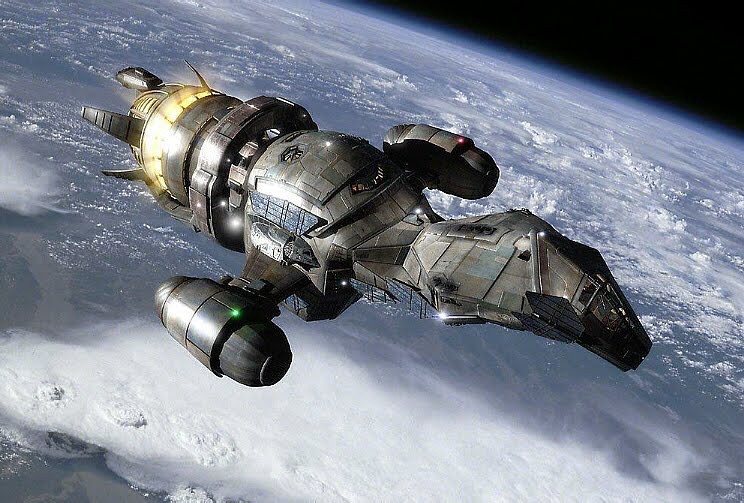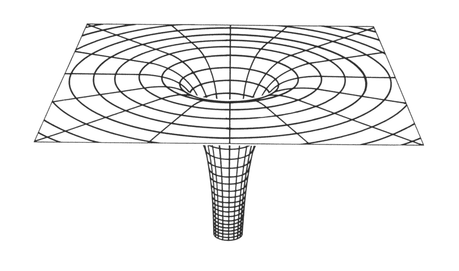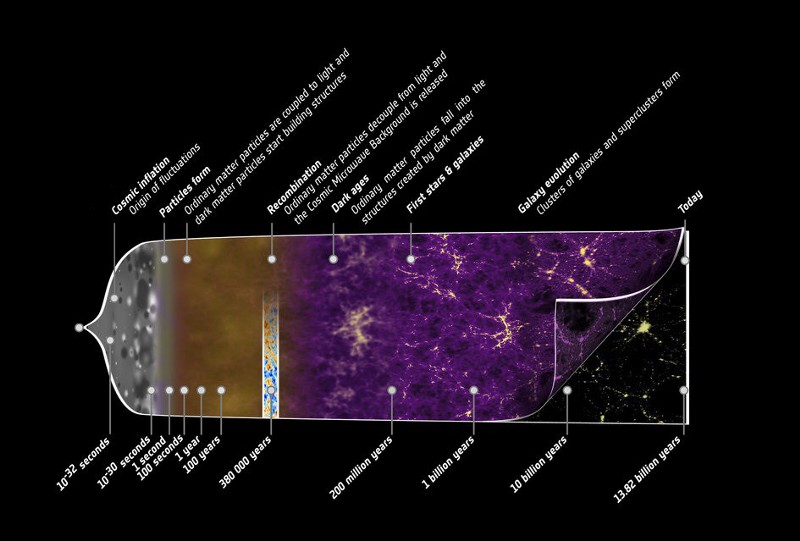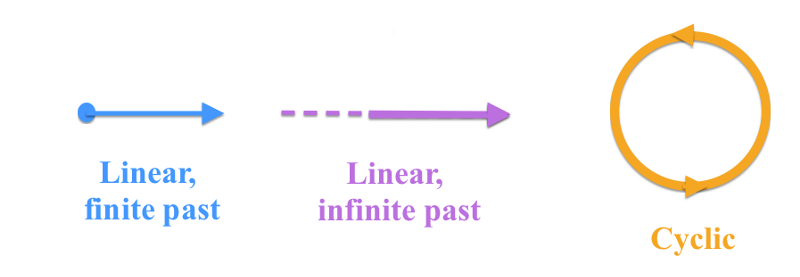Ask Ethan # 63: the birth of space and time
- Transfer
If something existed before the Big Bang, what could it mean for the birth of our Universe?
You can try to lie to yourself. You can tell yourself that you have invested all your time and all your efforts. But you know the truth - and I know it.
JJ Watt
Half a century has passed since the time when the greatest predictions of the Big Bang theory were confirmed and forever changed our view of the Universe. Instead of the concept of an eternal and infinite Universe, we now have an understanding that everything we can observe existed for about 14 billion years of cosmic time, and the Sun and the Solar System exist only a third of this period. Which is what makes Sebastian's question, asked in our column, so interesting:
When did space time begin? When I was a child, I learned that the beginning of everything was the Big Bang. Now, apparently, this view is not quite true, because before the Big Bang there was cosmic inflation, and the explosion was not an explosion at all, but a state when the Universe was hotter and denser. If there was inflation before the Big Bang, does it mean that there was space-time before it?
To fully answer the question, we need to consider three things. The first is what we mean by space and time.

You are accustomed to the usual concept of space - length, width, height - and time, which you can imagine simply as answers to the questions "when" and "where". And this is not such a bad idea - but there are two features of space and time that you need to know about and which may not seem so intuitive. It took Einstein to figure this out, and even he could not do it without help!
The first is that space and time are not two separate entities, as Newton believed. If you move in space, your movement changes the flow of time for you, and if two people move in space at different speeds, they perceive both their time and time that passes for another.

The way in which the easiest way to describe what is happening was invented not even by Einstein, but by mathematician Hermann Minkowski . We need to consider the combined space-time, where instead of three spatial and one time dimension there is a four-dimensional essence of space-time. In 1908, Minkowski wrote the following:
The views on space and time that I want to present to you have grown on the basis of experimental physics, and this is their strength. They are radical. Consequently, space itself and time itself is destined to disappear into the shadows, and only the union of the two will remain in the role of an independent reality.
And although Einstein initially opposed such a revolution, his adoption of a new concept led to an even greater discovery.

The point is not only that space and time are combined into a four-dimensional fabric of space-time, but also that the curvature of this fabric is determined by the presence of matter and energy. As movement through space-time influences how observers estimate passing time and distances, so the presence of matter and energy (and curvatures in general) affect the perception of space and time.
In the most extreme examples of the concentration of matter and energy — singularities — the concepts of space and time are violated.

Most familiar to us is to represent the singularity as the center of a black hole.where an arbitrary (and possibly infinite) density of matter and energy becomes attainable. In this case, the idea of space-time is violated, since the Einstein equations give meaningless results.
The second question to consider is the Big Bang scheme.

The present Universe seems to us to be relatively cold and empty, except for places where matter, stars, planets, and life that have been formed over the billions of years of its existence are concentrated. This entire cosmic pyramid, from subatomic scales down to huge galactic clusters, exists due to gravity, electromagnetism and nuclear forces.
Going back in time, we find that everything in the past was more uniform from a gravitational point of view, and the Universe was hotter (the lengths of the light waves were shorter) and denser, due to the fact that space-time was constantly expanding.

We can go back in time as far as we can, to higher and higher energies, higher temperatures and increasing densities. For example, before the time when:
stars and galaxies had not yet formed, and the Universe was a sea of warm neutral atoms;
it was too hot for the formation of neutral atoms, and the Universe was an ionized plasma of nuclei and electrons;
it was too hot to form nuclei, and there were only free protons and neutrons;
it was so hot that matter / antimatter vapors appeared for all known particles as a result of particle collisions.
You may want to go even further into the past, to an arbitrary density, temperature, and even to the event that corresponds to the singularity: the moment when the whole Universe was enclosed in one point.

And if this were so, then space and time would start from there - since there is no “where” outside space, and “when” outside time. But taking such a position as the real beginning of the universe, we would face a huge number of mysteries that could not be solved. Now physics teaches us that you cannot move as far as you want into the past.and that the state of inflation - an exponentially expanding space-time, with the energy inherent in the space itself - preceded and led to that hot and dense state, which we call the Big Bang.

After all, it is at that moment when the energy tied to space itself is transformed into matter and radiation, and the exponential expansion ceases, which leads to the appearance of such a Universe, which, in our opinion, it was in the past.

And we come to the third question, bearing in mind the singularities and the Big Bang: if the Universe before the Big Bang, during inflation, consisted of an exponentially expanding space-time, where did this space-time come from?
Oddly enough, there are three intuitive answers:
the universe could have a beginning, before which there was nothing;
it could exist forever, like an endless line extending in two directions;
it can be cyclical, like a circle repeating over and over again.

If we turn to the idea of the Big Bang without previous inflation, then all the facts speak of the first version: the Universe was born at the “moment” when it had infinite energy and at that “moment” space-time began.
But inflation changes everything. Instead of a singularity with t = 0, at the time of the Big Bang, the Universe appears, existing in the state of inflation, when it expands exponentially for an unspecified time.


The blue and red lines represent the “traditional” version of the Big Bang, when everything starts at t = 0, including space-time. But in the variant with inflation (yellow) we do not get to the singularity. Instead, space can be arbitrarily small, and time can be rewound endlessly.
Such a scenario is more suitable for the 2nd version, that is, the eternal universe. But it turns out, and there is a catch. According to one of the theorems, the inflationary universe cannot exist forever, and should have started from a singularity.

True, this theorem is based on the known laws of physics, and it is proposed to apply them by the time when the laws of physics cease to work. In addition, although the universe is huge and contains a lot of things, the amount of matter in it is still not infinite. It has about 1090 particles (including photons and neutrinos), originated during the hot and expanding state of the Big Bang, and another 10 -30 seconds earlier, in the last moments of inflation - and still, there are some things that we cannot observe.

Unfortunately, among them there is the origin of the inflationary space-time.
It is not known whether all of the above means that the inflationary universe could not exist forever, or that our laws of physics are not applicable to this question, or that it had a beginning, or that it was cyclical ... It is even possible that time is cyclical and cycles change with each iteration. And, despite all our progress, we still have these three possibilities, which philosophers and theologians have been discussing for so long:time is of course, time is infinite, time is cyclical .

We only know that if in the past there was a singularity, it has nothing in common with our hot and Big Bang, to which every particle of matter and energy in the observable Universe can be traced.
If we don’t think of a way to get information about the time when the observable Universe existed in some permissible sense, the answer to this question may turn out to be unattainable. Not every question in the column “Ask Ethan” will get a definite answer - we are discussing only what is known from the collected data.
